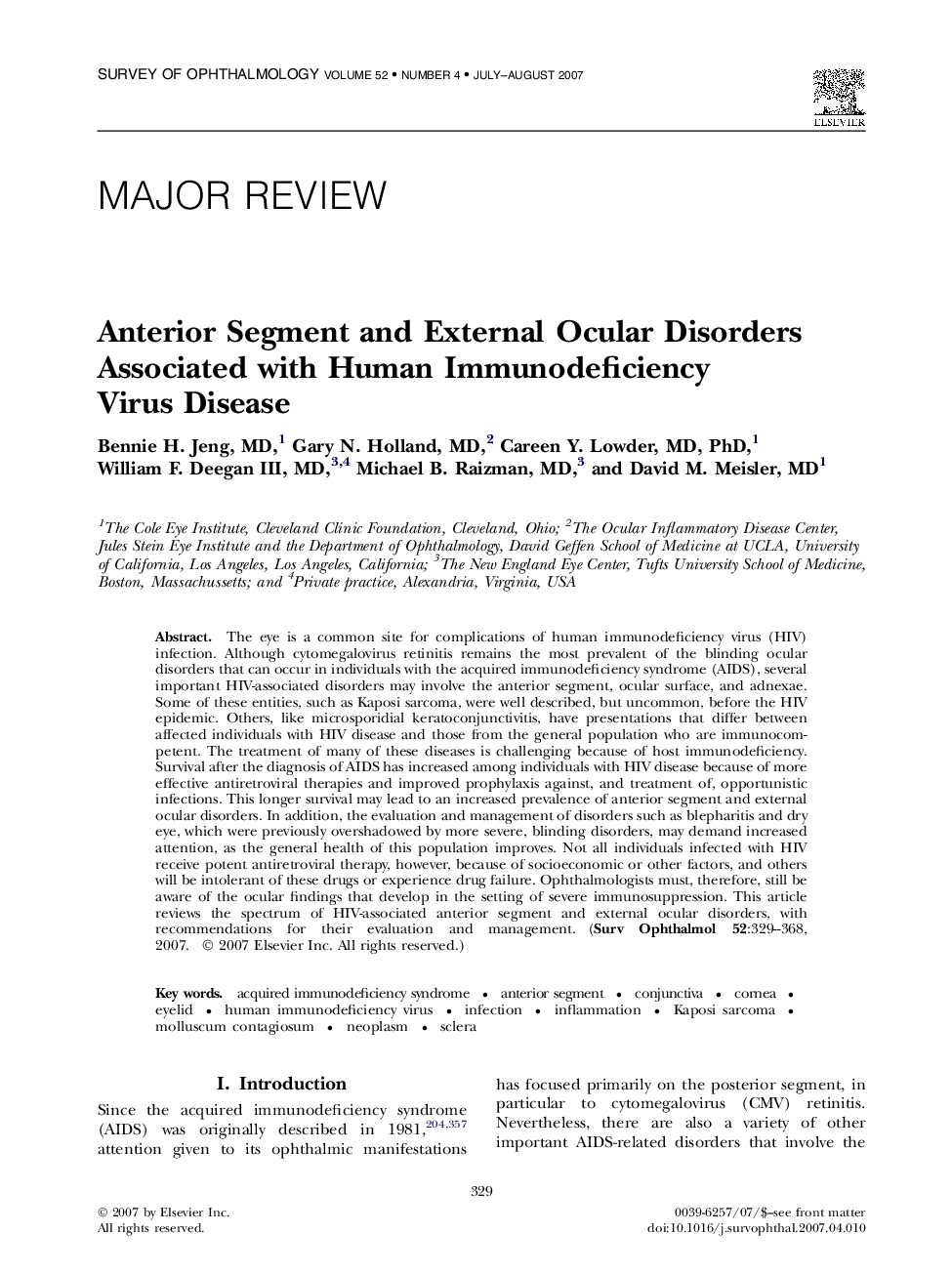| Article ID | Journal | Published Year | Pages | File Type |
|---|---|---|---|---|
| 4033030 | Survey of Ophthalmology | 2007 | 40 Pages |
The eye is a common site for complications of human immunodeficiency virus (HIV) infection. Although cytomegalovirus retinitis remains the most prevalent of the blinding ocular disorders that can occur in individuals with the acquired immunodeficiency syndrome (AIDS), several important HIV-associated disorders may involve the anterior segment, ocular surface, and adnexae. Some of these entities, such as Kaposi sarcoma, were well described, but uncommon, before the HIV epidemic. Others, like microsporidial keratoconjunctivitis, have presentations that differ between affected individuals with HIV disease and those from the general population who are immunocompetent. The treatment of many of these diseases is challenging because of host immunodeficiency. Survival after the diagnosis of AIDS has increased among individuals with HIV disease because of more effective antiretroviral therapies and improved prophylaxis against, and treatment of, opportunistic infections. This longer survival may lead to an increased prevalence of anterior segment and external ocular disorders. In addition, the evaluation and management of disorders such as blepharitis and dry eye, which were previously overshadowed by more severe, blinding disorders, may demand increased attention, as the general health of this population improves. Not all individuals infected with HIV receive potent antiretroviral therapy, however, because of socioeconomic or other factors, and others will be intolerant of these drugs or experience drug failure. Ophthalmologists must, therefore, still be aware of the ocular findings that develop in the setting of severe immunosuppression. This article reviews the spectrum of HIV-associated anterior segment and external ocular disorders, with recommendations for their evaluation and management.
